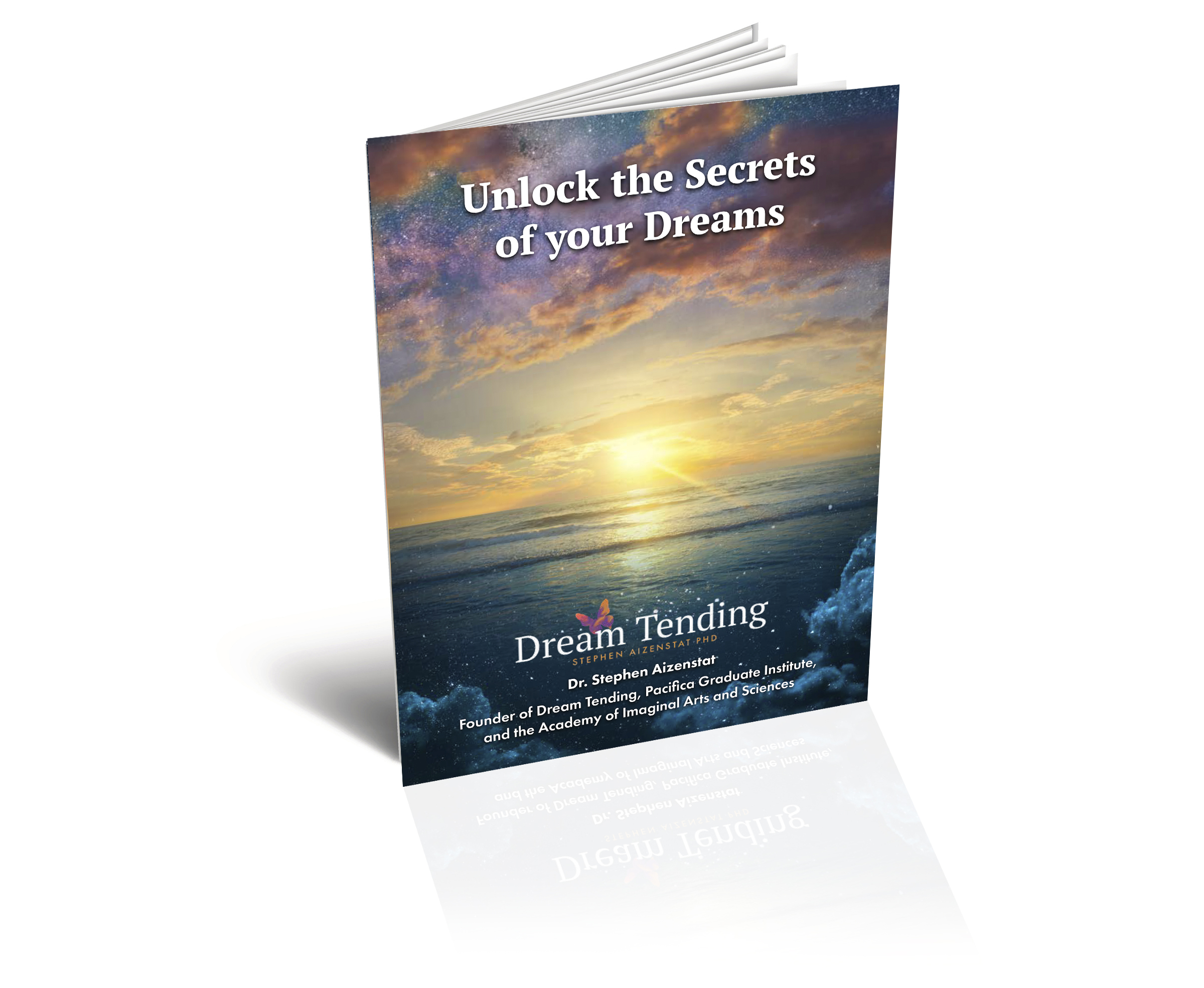“The art of interpreting dreams cannot be learnt in books. Methods and rules are good only when we can get along without them.” (Carl Jung)
There is a Zen saying, before you can be a nobody, you have to be a somebody. Before you can let go of the rules, you need to learn them.
 1. The Royal Road
1. The Royal Road
Freud’s seminal work, The Interpretation of Dreams, was published in 1900 to usher in the new century. This remarkable book includes his analysis of his own dreams to illustrate his dream theory. The work conveys not only Freud’s understanding of dreams, but also his preliminary ideas about mental functioning. It examines the textured intricacies of unconscious thinking and the complex relationship between dreaming and rational thought.
For Freud, “the interpretation of dreams was the royal road to a knowledge of the unconscious activities of the mind.” It is foundational to his technique of dreams along with free association.
 2. Opening the Door to the Collective Unconscious
2. Opening the Door to the Collective Unconscious
Carl Jung expanded the notion of the unconscious beyond the personal to encompass the universal, or what he called the collective unconscious. He was on friendlier terms with the unconscious than was Freud and stated in the Red Book, “I must learn that the dregs of my thoughts, my dreams, are the speech of my soul. I must carry them in my heart, and go back and forth over them in my mind, like the words of the person dearest to me.”
Jungian Dream Interpretation by James Hall provides an insightful introduction to Jung. Hall viewed the dream as compensatory, expanding the limited view of the ego. It communicated a message to the ego, illuminating its path of individuation. Jungian dream analysis involves dialog between the ego and the unconscious, using interpretation and imaginal techniques. “Active imagination,” a technique developed by Jung, gives voice to dream images using forms of self-expression such as drawing, moving or writing. Going beyond the personal, the Jungian analyst amplifies the image, linking it to transcendent archetypal patterns.
 3. Doing Dreamwork on the Ego
3. Doing Dreamwork on the Ego
James Hillman’s book, The Dream and the Underworld, conveys his radical theorizing about dreams. His writing is deconstructive and destabilizing, stirring the reader’s imagination to learn the language of dreams. He felt that both Freud and Jung translated the dream into waking language, and in doing so neglected the subversive quality of dreams. He states, “We must reverse our usual procedure of translating the dream into ego-language and instead translate the ego into dream-language. This means doing a dream-work on the ego.”
The dream needs to impact waking consciousness. “The dream-work cooks life events into psychic substance by means of imaginative mode.” Hillman considers the dream to be a tool to teach the “heroic ego” how to dream and in doing so, how to experience the world more fully.
 4. Tending the Dream
4. Tending the Dream
Dream Tending is a way of working with dreams developed by Dr. Stephen Aizenstat. It creates an imaginal space, a theater for the dream to enter the waking world. His book Dream Tending is an eloquently personal account of Aizenstat’s way of understanding and working with dreams. Building on the work of Freud, Jung and Hillman, he presents examples of Dream Tending as well as exercises that guide the reader in developing a dream practice. Dream Tending is more a way of being than a set of techniques. It prioritizes the importance of the dream tender’s personal dream practice. The dream tender is encouraged to meet the dream with patience, curiosity, “soft eyes” and deep listening that empties the mind of pre-conceptions. You can buy this book here.
 5. What Is a Social Dreaming Matrix™?
5. What Is a Social Dreaming Matrix™?
Social dreaming is a way of working with dreams in groups developed by Gordon Lawrence. In his edited book Experiences in Social Dreaming, he describes the theoretical basis of social dreaming and its practical applications to organizational consultation, conflict resolution and collaborative creative endeavors.
He coined the term social dreaming matrix ™ to highlight the generative power of collaborative dream work and to differentiate it from groups that focus on interpersonal dynamics and from traditional dream groups that work on single dreams. In a social dreaming matrix ™, all participants may share dreams. They are asked to offer their dream to the group and to listen to the dreams of others as their own. This is a way to relinquish individual ownership of the dream and diffuse the boundaries between self and other. Through the sharing and associating with the dream images, meanings emerge that enlarge the personal dimension of a dream and deepen one’s connection to others.
 6. Dream-Worker’s Panic
6. Dream-Worker’s Panic
Robert Bosnak’s writes in his book Tracks in the Wilderness of Dreaming, “Dream world is a wilderness (wildness) that doesn’t belong to the dreamer.” Like Hillman and Aizenstat, he sees the intelligence of dreams as embodied in mystery and having a life independent of the dreamer.
He brings a vulnerability to dream work when he describes “dream-workers panic” as the response to “the moment of utter helplessness upon entering the uncontrollable unconscious” that is the dream. Or when he says, “Dream work creates intimacy to the point of symbiosis.” “
In dreaming, there are “multiple carriers of consciousness” in spite of there being one point of view that dream work is accessed through embodied imagination. This technique focuses on the particulars of the dream figures and the corresponding feelings and sensations they evoke in the dreamer, bringing the dreamer to identify with different images and into relationship with multiplicity.
Written by Larry Brooks
Larry Brooks, Ph.D. is a Licensed Clinical Psychologist who has been in full-time private practice in Glendale for 25+ years. In addition to his psychotherapy practice, he provides consultation to post licensed mental health professionals and has written for the Cultural Weekly, an online publication critically examining cultural issues of the day.
References:
- Freud, S. (1900). The Interpretation of Dreams. Hogarth Press, 1955.
- https://psychclassics.yorku.ca/Freud/Dreams/dreams.pdf
- https://www.thesap.org.uk/resources/articles-on-jungian-psychology-2/carl-gustav-jung/dreams/
- Hall, J. (1983). Jungian Dream Interpretation. Inner City Books.
- Hillman, J. (1979). The Dream and the Underworld. New York: Harper & Row.
- http://mythosandlogos.com/Hillman.html
- https://dreamtending.com/wp-content/uploads/2019/02/dreamtending-new.pdf
- Aisenstat, S. (2011). Dream Tending: Awakening to the Healing Power of Dreams. New Orleans, La.: Spring Journal.
- Lawrence, W. (2003). Experiences in social dreaming. London: Karnac.
- Bosnak, R. (1977). Tracks in the Wilderness of Dreaming. Dell.

Stephen Aizenstat
Stephen Aizenstat, Ph.D., is the founder of Dream Tending, Pacifica Graduate Institute, and the Academy of Imaginal Arts and Sciences. He is a world-renowned professor of depth psychology, an imagination specialist, and an innovator. He has served as an organizational consultant to major companies and institutions, and as a depth psychological content advisor to Hollywood film makers. He has lectured extensively in the U.S., Asia, and Europe. He is affiliated with the Earth Charter International project through the United Nations, where he has spoken. Professor Aizenstat is the Chancellor Emeritus and Founding President of Pacifica Graduate Institute. He has collaborated with many notable masters in the field including Joseph Campbell, James Hillman, Marion Woodman, and Robert Johnson.
Unleash your creativity and innate genius
Learn the Power, Purpose and Intelligence of Dreams
Improve the quality of your relationships, discover your authentic life purpose and improve your emotional and physical health with the Dream Tending Academy.
Free e-book download
For over 40 years, I have devoted my life to understanding the profound wisdom and healing power that exists within each of us. I am excited to share my latest e-book that showcases how to tap into your dream state through the powerful applications of creativity and innovation. By following my groundbreaking methods and techniques, you will discover how to unlock your creative potential, increase your emotional and intellectual bandwidth, and realize your personal and professional goals. Download my e-book and unlock the secrets of your dreams and deep imagination!








